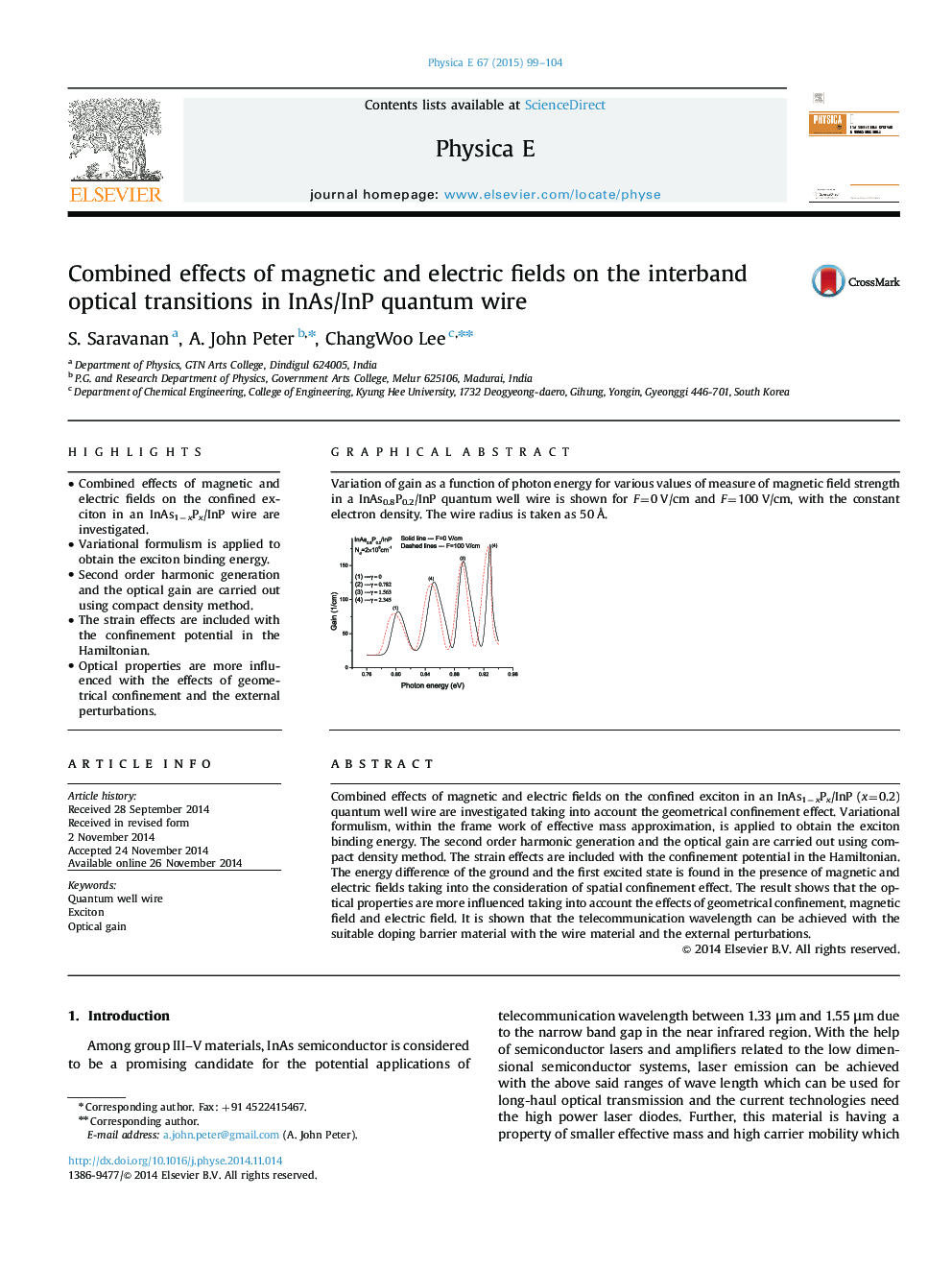| Article ID | Journal | Published Year | Pages | File Type |
|---|---|---|---|---|
| 1544437 | Physica E: Low-dimensional Systems and Nanostructures | 2015 | 6 Pages |
•Combined effects of magnetic and electric fields on the confined exciton in an InAs1−xPx/InP wire are investigated.•Variational formulism is applied to obtain the exciton binding energy.•Second order harmonic generation and the optical gain are carried out using compact density method.•The strain effects are included with the confinement potential in the Hamiltonian.•Optical properties are more influenced with the effects of geometrical confinement and the external perturbations.
Combined effects of magnetic and electric fields on the confined exciton in an InAs1−xPx/InP (x=0.2) quantum well wire are investigated taking into account the geometrical confinement effect. Variational formulism, within the frame work of effective mass approximation, is applied to obtain the exciton binding energy. The second order harmonic generation and the optical gain are carried out using compact density method. The strain effects are included with the confinement potential in the Hamiltonian. The energy difference of the ground and the first excited state is found in the presence of magnetic and electric fields taking into the consideration of spatial confinement effect. The result shows that the optical properties are more influenced taking into account the effects of geometrical confinement, magnetic field and electric field. It is shown that the telecommunication wavelength can be achieved with the suitable doping barrier material with the wire material and the external perturbations.
Graphical abstractVariation of gain as a function of photon energy for various values of measure of magnetic field strength in a InAs0.8P0.2/InP quantum well wire is shown for F=0 V/cm and F=100 V/cm, with the constant electron density. The wire radius is taken as 50 Å.Figure optionsDownload full-size imageDownload as PowerPoint slide
